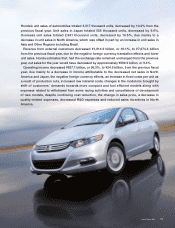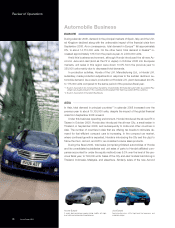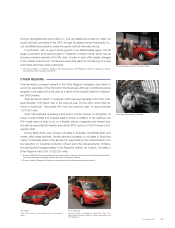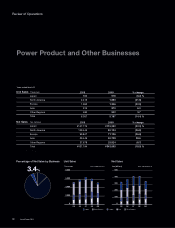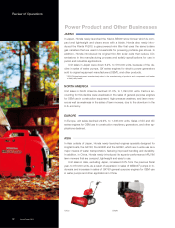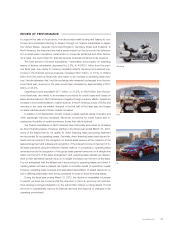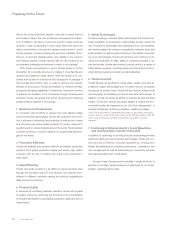Honda 2009 Annual Report Download - page 28
Download and view the complete annual report
Please find page 28 of the 2009 Honda annual report below. You can navigate through the pages in the report by either clicking on the pages listed below, or by using the keyword search tool below to find specific information within the annual report.
Total automobile demand in Japan*1 (as measured by the number of regular vehi-
cle registrations (661cc or higher) and mini-vehicles (660cc or lower)) for the fiscal
year showed approximately 12% decline compared with the previous year to 4.7
million units, reflecting the decline in demand as the financial crisis began to have
an impact on the economy from September 2008.
Of this total, regular vehicle registrations declined approximately 16% from the
previous year, to about 2.89 million units, as the global financial crisis began to
have an impact on the real economy. Sales of mini-vehicles held relatively stable
because of the favorable effects of the introduction of new models by various man-
ufacturers and the increasing trend toward driving smaller cars, however, from No-
vember 2008 onward the economy moved into a downturn, and mini-vehicle sales
for the fiscal year fell 4% from the level of the previous year, to 1.81 million units.
Amid these business operating conditions, Honda worked to strengthen its
product lineup by introducing the new model FREED, a brand-new compact mini-
van that is easy to handle and offers a spacious cabin with stylish design in May
2008, a new version of the Odyssey minivan in October, and the all-new Life in
November. In addition, in February 2009, Honda launched the Insight, a brand-
new hybrid vehicle that incorporates a lightweight, compact hybrid system inside
a compact body, while offering superior fuel economy and fun driving.
Although registrations of the Honda Fit and new models FREED and Insight
were strong, as a result of market headwind, overall unit sales dropped 9.6% be-
low the level of the previous fiscal year, to 556,000 units.
In production activities, Honda reduced output in response to the worldwide
decline in unit sales and the need to make adjustments in inventories. As a conse-
quence, automobile production during the fiscal year was down 11.4%, to
1,148,000 units. In response to sudden changes in global markets, Honda trans-
ferred all production of the Stream model from the Suzuka Factory to the Saitama
Factory. Also, production of the Fit for the North American market began at the
Saitama Factory in addition to the Suzuka Factory. The start-up of production at
the Yorii Factory, which was scheduled for 2010, has been postponed for two
years or more. Also, plans for beginning the manufacturing of mini-vehicles at the
Yokkaichi Factory of Yachiyo Industry Co., Ltd., have been postponed for one
year or more.
*1: Source: JAMA
Accord (Japan)
Inspired by the key phrase “advanced quality,” the Accord
offers everything in performance and function plus a major
improvement in quality.
Odyssey (Japan)
Offers a smoother ride even better than previous minivans with
its low-slung styling
JAPAN
Annual Report 2009
26
Automobile Business
Review of Operations











